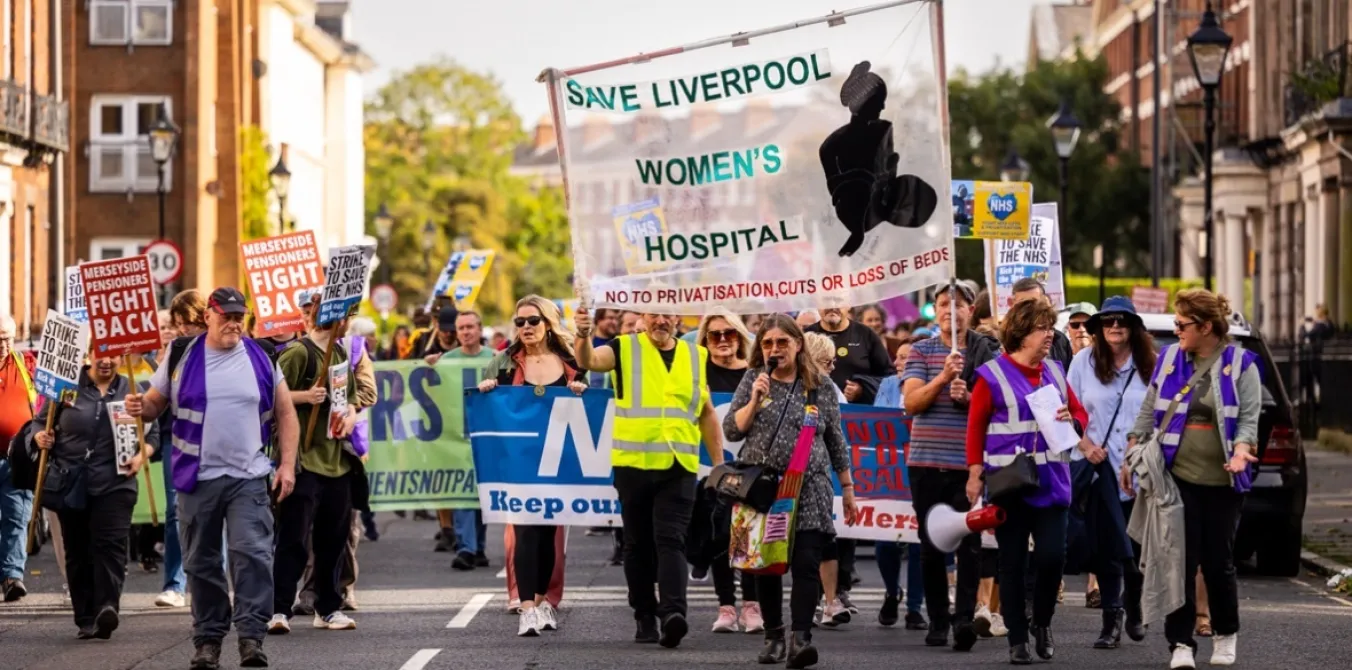
IN 2015, the BBC aired the claim that Liverpool needs fewer hospitals.
On an episode of Panorama, leaders in the council and clinical commissioning group painted them as financial dead weight.
Conveniently, news had already been surfacing that it was the hospital dedicated to women’s healthcare that was at risk of getting the axe.
An internal report had deemed it “financially unviable.” It was barely 20 years old at the time.
But in that period, the hospital had already become a cornerstone of the community.
It was built as part of the church-led Project Rosemary, which aimed to address the injustices that fuelled the Toxteth uprising in the 1980s.
“It was kind of like a reparation, to have something really good in the heart of the community … and to have local prospects for jobs and health,” says Lesley Mahmood, a former councillor and long-time activist who co-founded the campaign to save it.
The site is the largest of its kind in Europe, making it ideal for conducting research.
“When you’re getting 8,000 babies born a year,10,000 gynae procedures, and 50,000 women going in and out of the hospital, you’ve got that ability for large-scale studies,” Lesley says.
It’s also been at the forefront of pioneering treatments, such as utilising robotic surgery to treat endometriosis. But now discussions about relocating the hospital, which first began in 2016, have resurfaced.
Despite significant opposition, the Integrated Care Board (ICB) approved a “case for change” this year.
The proposal originated from a programme which was commissioned by the ICB itself.
They then held a series of poorly publicised “engagement” meetings on the matter, apparently for transparency and feedback.
But Lesley says that the process was deeply skewed.
“The ICB set the questions, do the presentation, write the notes, mark their own homework, write the report, and then give that to the so-called independent consultant,” she says.
The case argues that the Women’s is “isolated” from other hospitals and has no intensive or critical care facilities, and uses this to support the “co-location” of services to other sites.
But campaigners say that according to the ICB’s own data, the number of patients requiring transfers for intensive care is one a month, rising to two a month for critical care — a fraction of the 50,000 treated there annually.
The Royal, which is the nearest hospital to have these facilities, is a mile away.
The case also argues that women who are turning up at A&Es at other hospitals aren’t getting specialised care because they don’t have services focused on women’s health.
But Lesley says that the A&E at the Women’s is already one of the most efficient in the city, compared to the Royal, which is plagued by long waits.
“Ninety per cent get seen within four hours. If you’re pregnant, you get triaged within 15 to 30 minutes.
“One of the big questions is, if they end up tacking a unit on the Royal or Aintree, are they even going to have a women’s emergency department?”
The “case for change” says that it is “committed” to continuing to provide services from the hospital’s location on Crown Street.
But Lesley cautiously notes: “They’re not saying they’ll keep it for women.”
“They could stick Liverpool Women’s Hospital as a ward somewhere and put a title over the door.”
She later remarks, “Wouldn’t [private provider] Spire or somebody love to get commissioned by the ICB to do elective surgery in there?”
The Merseyside Pensioners Association has long been a strong advocate for the campaign to save the hospital.
Mary Whitby, an active member who campaigns against the private sector’s encroachment on the NHS, suggests the case for change is a deliberate attempt to divert attention from a significant shift in power.
In November, Liverpool Women’s Hospital Trust, in effect, merged with the Aintree, Broadgreen and Royal hospitals that formed the Liverpool University Hospitals NHS Foundation Trust.
Together, they now form the University Hospitals of Liverpool Group (UHLG).
Liverpool Chest and Heart, the Walton Centre and Clatterbridge are also set to join the “super group,” while concerns are raised that it could pave the way for a full merger.
“It’s a massive distraction because I don’t understand how you can merge all those hospitals without having to consult or talk about it in public,” Mary says.
It was announced that while trusts will remain operating as statutory entities, in all other aspects, they will delegate authority to UHLG.
“The trusts, although they still exist as legal entities, have delegated all their powers to this new committee,” says Lesley.
“The whole theme is not the patients. It’s about mega hospitals, centralising services, and then pulling out the services that you can.”
Mary suggests that making the hospitals part of one conglomerate will make closures such as that of the Women’s much smoother.
“Isn’t it easier to shrink it all down to a much smaller board that you’ve got to get to agree to close your hospital?”
Reducing costs was one of the advantages highlighted in support of forming the supergroup.
But Mary says that paradoxically, the merger itself will cost a “fortune.”
“They’re going to keep changing logos, changing names, changing head of paper, changing staff uniforms, changing computer systems.”
She also notes the lack of accountability for those making such decisions.
“These boards are not democratically elected. They’re not accountable to us. We can’t remove them. We have no scrutiny; we can’t control them at all.
“And yet they’re spending vast amounts of public money.
“They’re going to do 90 per cent of the restructuring without any consultation, without any actual legal power to do it.”
“And then when they’ve done it ... they’ll look for it to be recreated as a legal entity.”
The upheavals have done little to improve the bleak outlook for the future of maternity care.
The campaigners note that as it is, the question of where babies will be born was alarmingly absent from the case for change in women’s services.
“I don’t think they have any plan to have 8,000 babies born in any of the hospitals in Liverpool,” Mary says.
“I think that they will commission private companies (...) or they’ll encourage more women to have babies at home on their own.
“I think it will be in the community, and that’s how they make excuses to close hospitals.
“In order to let [private companies] get a foothold, they’ve had to shrink the NHS and fragment it and break it down.
“They don’t want to run expensive, big comprehensive hospitals. They want to take the lucrative, easy work that doesn’t expose them to liability.”
She says this is already happening and cites hearing about groups being “bussed in” from Blackpool to Skelmersdale, where private firm SpaMedica performs eye surgery in an office block.
















